
The Long History of the Future: Why Tomorrow's Technology Still Isn't Here
by
Nicole Kobie
Published 3 Jul 2024
Blame journalists desperate for compelling headlines that you’ll click (my sincerest apologies, this includes me too), desperately trying to avoid the dull confusing acronym favoured in the aerospace industry. Those in the field call such vehicles ‘VTOLs’, which stands for Vertical Take-Off and Landing, as that’s exactly what these vehicles do. Like a helicopter, they don’t need a runway, just a helipad for going up and coming back down. Unlike a helicopter, some also have wings for more efficient flight, hence the designs that look like the offspring between a chopper and a turbo-prop plane. But eVTOLs – the electric version, as batteries have spurred the recent boom in development – are just one design in a long line of so-called flying cars wobbling into the skies over the last few centuries.
…
The work has been facilitated by a younger generation of workers, who have upgraded the analogue-era controls with digital components that are much easier to use, lighter and cheaper. Such technological leaps forward have made life easier for anyone developing VTOL-style personal flying machines now, as it’s like not having to invent the wheel to make cars. But Moller isn’t convinced by the current crop of eVTOLs – not even those developed by Joby Aviation, a company founded by his former employee JoeBen Bevirt – in particular, because he has doubts about battery-powered flight. He’s now hoping to release the Neuera as a recreational craft, dodging some of the toughest certification challenges.
…
Combining the take-off of a helicopter with the efficient in-air lift of fixed wings is, in theory at least, the best of both worlds. No wonder the idea has appeal – and it does. The Centre for Future Transport and Cities at Coventry University tracks eVTOL aircraft concepts in a database. As of 2022, more than 500 concepts had been unveiled, though fewer than a third had yet to actually fly. Most of the designs Coventry tracks for urban air mobility (UAM – sorry, the industry loves these acronyms) are VTOLs that are electric- or hybrid-powered, seat fewer than 10 passengers and have a take-off mass of less than 3,175kg (700lb). But there are some differences, in particular between wingless and winged designs.

Road to Nowhere: What Silicon Valley Gets Wrong About the Future of Transportation
by
Paris Marx
Published 4 Jul 2022
To compare, after the modern flying car frenzy began to take hold in 2018, the Guardian published an article that stated, “It’s probably a matter of when, not if, road-based travel becomes obsolete.”18 It’s baffling that such a statement made it past an editor, but it is also a product of the blind adherence that tech companies have cultivated in some circles. The modern take on the flying car is, in truth, not a flying car at all. The vertical takeoff and landing vehicle, also known as a VTOL or an eVTOL for the electric version, is more akin to a helicopter, but instead of the large rotor on top, it typically has several smaller rotors positioned along the craft. These vehicles will never be seen cruising down the highway, then taking off into the air, and like a car or a helicopter, they are not going to carry very many passengers.
…
See bicycles Seattle, WA, ride-hailing services in, 99 Securities and Exchange Commission (SEC), 138 Sedran, Thomas, 129–30 self-checkout, 194–5 self-driving cars accidents with, 132–5 Autonomous Land Vehicle project, 119 Brin on, 114–5 challenges of, 126, 129–30 environmental dilemmas and, 131–2 Google, 6 Intermodal Surface Transportation Efficiency Act (1991), 119 Kalanick on, 116 Navlab autonomous vehicles, 119–20 Ng on, 126 pedestrians and, 127 pricing of, 127–8 pulp science fiction and, 118 Radio Corporation of America (RCA) and, 118 software for, 122–3 speed and, 123–4 Tesla’s Autopilot system, 137–8 Tsukuba Mechanical, 119 VaMoRs, 119 Sepulveda Pass, 141 Shanghai Gigafactory (Tesla), 83 Sheffield, UK, docked bikeshare system in, 170–1 Sheller, Mimi, 158, 207 Shell Oil City of Tomorrow, 2 Shill, Gregory, 30 shipping industry, 49 shut-in economy, 196–7 Sidewalk Labs, 228–30 Silicon Valley, 37–8, 44–5 skates (platforms), 146–7 Skyports, 154–5 Small Business Investment Company, 55 smart homes, 60–1 smartphone apps, 55, 181, 194–5 Smiley, Lauren, 196 Social Bicycles (SoBi), 167–8 Socialist Left Party, 209 social media, 61–2 SolarCity, 55, 143, 188 solar panels, Musk on, 188–9 Southern State Parkway, 26 Soviet Union, 39 space program, 48 SpaceX, 55, 144, 148, 150–1 speed limiter referendum, 19–20 speed limits, 18–20 Sputnik I satellite, 39, 45 standardized containers, increasing use of, 49 Standard Oil of California, 21 Stanford Industrial Park, 40 Stanford Research Institute, 54–5 Stanford University, 39–40, 55, 120 Stark, Tony, 70 Starley, John Kemp, 160, 162 Starship Technologies, 172, 173–5, 176–7 Stop de Kindermoord, 205 streetcars, 12–3, 15, 21, 92, 160 “subscriber city,” 197 suburbanization, 23 suburbs, 12–3 superhighway plan (Detroit), 22 supply chains, 50 Surface Transportation Policy Project, 141 surge pricing, for ride-hailing services, 100 Swisher, Kara, 116–7 Taft-Hartley (1947), 112 taxi medallions, 104–5 taxi services about, 95–6, 101–2, 104–5 industry regulation and, 107, 110–1, 185 Taylor, Isaac, 122 TCP/IP protocol, 50 TechGirls Canada, 228–9 tech industry development of, 9–10 growth of, 4, 180–5 speed of technological innovation, 48 technological solutionism, 59 Tesla, 5–6, 55, 63–4, 70, 72, 73, 82–4, 85–6, 116, 137–8, 143, 147, 158–9, 188, 189, 190 Tesla, Nikola, 70 Texas, Interstate Highway System in, 140 Thacker Pass, NV, 79, 226 Thiel, Peter, 46–7 Thrun, Sebastian, 121 Toronto, Canada, 228–30 Toyota, 116, 121, 122 train system in France, 220 in North America, 218–9 transportation bus system, 21, 215, 219 computerized planning systems for, 130 flying cars, 151–2, 159 history of, 7 jitneys, 89–91, 92, 108–9 Navlab autonomous vehicles, 119–20 present-day dominance of, 34–5 taxi services, 95–6, 101–2, 104–5, 107, 110–1, 185 three-dimensional vs. two-dimensional, 145 train system, 218–9, 220 tunnels for, 144–51, 154–5, 158–9, 189 vertical takeoff and landing vehicle (VTOL/eVTOL), 152–5, 157, 158 walking as primary means of, 12 Trudeau, Justin, 79–80, 228 Trump, Donald, 78 Tsukuba Mechanical, 119 tunnels, for transportation, 144–51, 154–5, 158–9, 189 Turner, Fred, 41, 43, 52 Turner, Matthew, 141–2 Uber about, 115 acquisition of Jump, 166–8 Advanced Technologies Group (ATG), 133, 134–5 benefits of, 94 campaigns for, 103 changed from Ford Fusion to Volvo XC90 SUVs, 134–5 compared with taxi services, 95–6 core business of, 93 costs for, 107–8 Covid-19 and, 108 customer base for, 100–1 divisions of, 153–4, 184 driver pay for, 103–4, 107 effect on traffic of, 100 employee classification for, 111–2 founding of, 181 Greyball and, 110 growth of, 97, 105–6 industry regulation and, 101–2, 107, 110–1, 112–3, 156, 174, 185 loss of money by, 106–7, 184–5 marketing by, 158–9 media representation of, 94–5 micromobility services of, 166–9 model of, 102–3 in New York City, 98–9 origins of, 92–3, 109 pricing for, 184 promises made by, 186 pulls out of China, 152 refocus on ride-hailing and food delivery services, 184–5 safety record of, 134, 135–6 in San Francisco, 97–8 walking vs., 191 Uber Air, 153–4, 155, 157, 159 Uber Copter, 155–6 Uber Eats, 184–5 Uber Elevate, 152, 154, 159 unemployment rate, 95–6 unions, for taxi drivers, 101–2 United Kingdom (UK) docked bikeshare system in, 170–1 ecommerce in, 193 University of Technology Sydney, 75 University Paris-East, 169–70 Unsafe at Any Speed (Nader), 27–8 Untokening collective, 218 Urban Challenge, 120 urban renewal strategy, 26 Urry, John, 32–3, 143 US Air Force, 50 US Department of Defense, 50 US-Japan Semiconductor Trade Agreement (1986), 45 US National Labor Relations Act, 102 VaMoRs, 119 Vansintjan, Aaron, 222 Vasquez, Rafaela, 132, 135 Vélib’ bikeshare system, 210 venture capitalists, 186–7, 199 vertical takeoff and landing vehicle (VTOL/eVTOL), 152–5, 157, 158 Very Far Away from Anywhere Else (Le Guin), 202 Vietnam War, 39, 40, 43, 49 VoiceOver, 175 Volkswagen, 77, 78, 129–30 Volocopter, 152 Volvo XC90 SUVs, 134–5 Walker, Jarrett, 59, 142–3, 181–2 walking, as means of transportation, 12, 191 Washington, DC, ride-hailing services in, 99 Waterfront Toronto, 228–9, 230, 231 Waymo, 133, 138, 186 web 2.0, 57 WeWork, 181, 182–3 white people, mortgages and, 29 Who Killed the Electric Car?
…
See bicycles Seattle, WA, ride-hailing services in, 99 Securities and Exchange Commission (SEC), 138 Sedran, Thomas, 129–30 self-checkout, 194–5 self-driving cars accidents with, 132–5 Autonomous Land Vehicle project, 119 Brin on, 114–5 challenges of, 126, 129–30 environmental dilemmas and, 131–2 Google, 6 Intermodal Surface Transportation Efficiency Act (1991), 119 Kalanick on, 116 Navlab autonomous vehicles, 119–20 Ng on, 126 pedestrians and, 127 pricing of, 127–8 pulp science fiction and, 118 Radio Corporation of America (RCA) and, 118 software for, 122–3 speed and, 123–4 Tesla’s Autopilot system, 137–8 Tsukuba Mechanical, 119 VaMoRs, 119 Sepulveda Pass, 141 Shanghai Gigafactory (Tesla), 83 Sheffield, UK, docked bikeshare system in, 170–1 Sheller, Mimi, 158, 207 Shell Oil City of Tomorrow, 2 Shill, Gregory, 30 shipping industry, 49 shut-in economy, 196–7 Sidewalk Labs, 228–30 Silicon Valley, 37–8, 44–5 skates (platforms), 146–7 Skyports, 154–5 Small Business Investment Company, 55 smart homes, 60–1 smartphone apps, 55, 181, 194–5 Smiley, Lauren, 196 Social Bicycles (SoBi), 167–8 Socialist Left Party, 209 social media, 61–2 SolarCity, 55, 143, 188 solar panels, Musk on, 188–9 Southern State Parkway, 26 Soviet Union, 39 space program, 48 SpaceX, 55, 144, 148, 150–1 speed limiter referendum, 19–20 speed limits, 18–20 Sputnik I satellite, 39, 45 standardized containers, increasing use of, 49 Standard Oil of California, 21 Stanford Industrial Park, 40 Stanford Research Institute, 54–5 Stanford University, 39–40, 55, 120 Stark, Tony, 70 Starley, John Kemp, 160, 162 Starship Technologies, 172, 173–5, 176–7 Stop de Kindermoord, 205 streetcars, 12–3, 15, 21, 92, 160 “subscriber city,” 197 suburbanization, 23 suburbs, 12–3 superhighway plan (Detroit), 22 supply chains, 50 Surface Transportation Policy Project, 141 surge pricing, for ride-hailing services, 100 Swisher, Kara, 116–7 Taft-Hartley (1947), 112 taxi medallions, 104–5 taxi services about, 95–6, 101–2, 104–5 industry regulation and, 107, 110–1, 185 Taylor, Isaac, 122 TCP/IP protocol, 50 TechGirls Canada, 228–9 tech industry development of, 9–10 growth of, 4, 180–5 speed of technological innovation, 48 technological solutionism, 59 Tesla, 5–6, 55, 63–4, 70, 72, 73, 82–4, 85–6, 116, 137–8, 143, 147, 158–9, 188, 189, 190 Tesla, Nikola, 70 Texas, Interstate Highway System in, 140 Thacker Pass, NV, 79, 226 Thiel, Peter, 46–7 Thrun, Sebastian, 121 Toronto, Canada, 228–30 Toyota, 116, 121, 122 train system in France, 220 in North America, 218–9 transportation bus system, 21, 215, 219 computerized planning systems for, 130 flying cars, 151–2, 159 history of, 7 jitneys, 89–91, 92, 108–9 Navlab autonomous vehicles, 119–20 present-day dominance of, 34–5 taxi services, 95–6, 101–2, 104–5, 107, 110–1, 185 three-dimensional vs. two-dimensional, 145 train system, 218–9, 220 tunnels for, 144–51, 154–5, 158–9, 189 vertical takeoff and landing vehicle (VTOL/eVTOL), 152–5, 157, 158 walking as primary means of, 12 Trudeau, Justin, 79–80, 228 Trump, Donald, 78 Tsukuba Mechanical, 119 tunnels, for transportation, 144–51, 154–5, 158–9, 189 Turner, Fred, 41, 43, 52 Turner, Matthew, 141–2 Uber about, 115 acquisition of Jump, 166–8 Advanced Technologies Group (ATG), 133, 134–5 benefits of, 94 campaigns for, 103 changed from Ford Fusion to Volvo XC90 SUVs, 134–5 compared with taxi services, 95–6 core business of, 93 costs for, 107–8 Covid-19 and, 108 customer base for, 100–1 divisions of, 153–4, 184 driver pay for, 103–4, 107 effect on traffic of, 100 employee classification for, 111–2 founding of, 181 Greyball and, 110 growth of, 97, 105–6 industry regulation and, 101–2, 107, 110–1, 112–3, 156, 174, 185 loss of money by, 106–7, 184–5 marketing by, 158–9 media representation of, 94–5 micromobility services of, 166–9 model of, 102–3 in New York City, 98–9 origins of, 92–3, 109 pricing for, 184 promises made by, 186 pulls out of China, 152 refocus on ride-hailing and food delivery services, 184–5 safety record of, 134, 135–6 in San Francisco, 97–8 walking vs., 191 Uber Air, 153–4, 155, 157, 159 Uber Copter, 155–6 Uber Eats, 184–5 Uber Elevate, 152, 154, 159 unemployment rate, 95–6 unions, for taxi drivers, 101–2 United Kingdom (UK) docked bikeshare system in, 170–1 ecommerce in, 193 University of Technology Sydney, 75 University Paris-East, 169–70 Unsafe at Any Speed (Nader), 27–8 Untokening collective, 218 Urban Challenge, 120 urban renewal strategy, 26 Urry, John, 32–3, 143 US Air Force, 50 US Department of Defense, 50 US-Japan Semiconductor Trade Agreement (1986), 45 US National Labor Relations Act, 102 VaMoRs, 119 Vansintjan, Aaron, 222 Vasquez, Rafaela, 132, 135 Vélib’ bikeshare system, 210 venture capitalists, 186–7, 199 vertical takeoff and landing vehicle (VTOL/eVTOL), 152–5, 157, 158 Very Far Away from Anywhere Else (Le Guin), 202 Vietnam War, 39, 40, 43, 49 VoiceOver, 175 Volkswagen, 77, 78, 129–30 Volocopter, 152 Volvo XC90 SUVs, 134–5 Walker, Jarrett, 59, 142–3, 181–2 walking, as means of transportation, 12, 191 Washington, DC, ride-hailing services in, 99 Waterfront Toronto, 228–9, 230, 231 Waymo, 133, 138, 186 web 2.0, 57 WeWork, 181, 182–3 white people, mortgages and, 29 Who Killed the Electric Car?
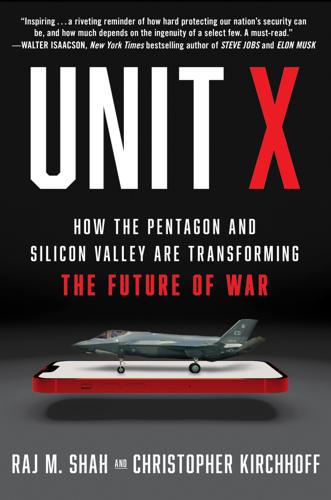
Unit X: How the Pentagon and Silicon Valley Are Transforming the Future of War
by
Raj M. Shah
and
Christopher Kirchhoff
Published 8 Jul 2024
test its prototypes at Fort Hunter Liggett: “Joby and the US Government Kickstart the Air Mobility Revolution,” Joby Aviation, February 8, 2922, https://www.jobyaviation.com/blog/joby-us-government-kickstart-air-mobility-revolution/. “We took an old remote site”: JoeBen Bevirt, interview with authors, June 28, 2023. $131 million contract to provide eVTOL aircraft: “Joby Delivers First eVTOL Aircraft to Edwards Air Force Base Ahead of Schedule,” Joby Aviation, September 25, 2023, https://www.jobyaviation.com/news/joby-delivers-first-evtol-edwards/. To see how bureaucratized technology development by the primes has become when compared with historical benchmarks, including the development of the SR-71 and F-117 in months and years rather than decades, see Ben R.
…
CHAPTER SEVEN: VENTURE CAPITAL GOES TO WAR “please come talk to me”: David Merrill, interview with authors, May 1, 2023. secured agreements to provide five hundred units: “Elroy Air Unveils Its Chaparral, a First-of-Its-kind, Autonomous, Hybrid-Electric VTOL Cargo Aircraft,” Elroy Air, January 26, 2022, https://elroyair.com/company/news/press-releases/chaparral-autonomous-vtol-unveil/. Raj and Philip recognized that technology: Raj M. Shah, “Testimony of Mr. Raj M. Shah, Future of Defense Task Force, House Armed Services Committee U.S. House of Representatives,” Hearing Titled: “Supercharging the Innovation Base,” February 5, 2020, https://www.congress.gov/116/meeting/house/110475/witnesses/HMTG-116-AS00-Wstate-ShahR-20200205.pdf.
…
JOBY AVIATION In 2016, one of our partners, Isaac Taylor, a veteran of Google X, the company’s experimental “moonshot” lab, discovered a young inventor, JoeBen Bevirt, and his team working in a barn on a ranch in the Santa Cruz Mountains. They were trying to build something that Bevirt had been dreaming about since he was a kid growing up in a remote hippie community in Last Chance, California: a flying car. In techno-language, it’s called a battery-powered vertical takeoff and landing (eVTOL) aircraft. The cool factor was off the charts. Taylor and DIU offered to help Bevirt’s Joby Aviation by obtaining permission for the company to test its prototypes at Fort Hunter Liggett, an army base in Jolon, California, near Monterey. “We took an old remote site and installed a tent hangar and facilities where our test flight test team was able to operate,” Bevirt recalls.

The Future Is Faster Than You Think: How Converging Technologies Are Transforming Business, Industries, and Our Lives
by
Peter H. Diamandis
and
Steven Kotler
Published 28 Jan 2020
Uber’s main interest is in “electric vertical take-off and landing vehicles”—or eVTOLs for short. eVTOLs are being developed by a plethora of companies, but Uber has very particular needs. For an eVTOL to qualify for their aerial ridesharing program, it must be able to carry one pilot and four passengers at a speed of over 150 mph for three continuous hours of operation. While Uber envisions twenty-five miles as its shortest flight (think Malibu to downtown Los Angeles), these requirements allow you to leap from northern San Diego to southern San Francisco in a single bound. Uber already has five partners who have committed to delivering eVTOLs that meet these specs, with another five or ten still to come.
…
The rest of this book is devoted to these forces and their rapid and revolutionary impact. Before we dive deeper into that tale, let’s first examine convergence through a more manageable lens, returning to our initial question about flying cars: Why now? To answer that, let’s examine the three basic requirements any Uber eVTOL will have to meet: safety, noise, and price. Helicopters, which are the closest model anyone has for a flying car, have been around for nearly eighty years—Igor Sikorsky built the world’s first one in 1939—yet they can’t come close to satisfying these requirements. Besides being loud and expensive, they have that bad habit of falling out of the sky.
…
Thanks to the explosive growth of both solar power and electric cars, there’s now a bigger need for better energy storage systems, resulting in a next generation of lithium-ion batteries with increased range, and, as an added bonus, enough power to lift flying cars. In the aerial ridesharing equation, we’ve solved safety and noise, but price still requires a few more innovations. There’s also the not small issue of manufacturing enough eVTOLs for Uber’s program. To be able to meet Uber’s outsized demand at an affordable price would require suppliers to produce aircraft faster than during WWII, when a still unbroken record of eighteen thousand B24 fighters were pumped out over two years—or, at its peak, one plane every sixty-three minutes.
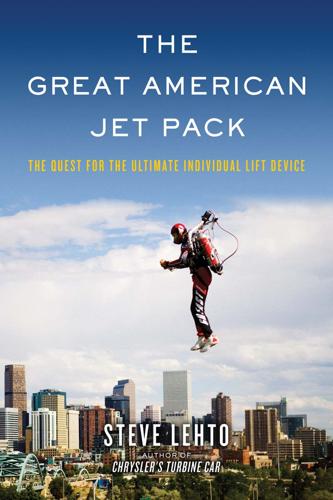
The Great American Jet Pack: The Quest for the Ultimate Individual Lift Device
by
Steve Lehto
Published 30 Apr 2013
Engines, Ltd., 157 UFOs—Nazi Secret Weapons (Zündel), 183–184 Underwood, Donald L., 106–109 University of Buffalo, 179 US Army flying platforms and, 13–16, 104, 106–109, 112–115 jet belts and, 78–81 man rockets and, 19–21, 24 rocket belts and, 45–49, 54 small rocket lift devices and, 28–33, 37 US Army Aviation Human Research Unit, 46 US Army Transportation Museum, 179 US Marine Corps, 94–95 US Patent and Trademark Office, 92, 131, 133, 160 US Transportation Security Administration (TSA), 143 V-1 Buzz bomb, 181 Verne, Jules, 1 vertical take-off and landing (VTOL) vehicles, 2, 27, 63, 64, 162 Vertical Take-Off Flying Platform, 14–15 Von Braun, Werner, 19 Voss, Mark, 105–107 VTOL. See vertical take-off and landing (VTOL) vehicles Vuono, Carl, 104 VZ-1 Flying Platform, 11–13 VZ-1E Flying Platform, 13–14 Walker, Texas Ranger (tv show), 141 Walker, Tommy, 119 WASP. See Williams Aerial Systems Platform (WASP) water, compressed, 166 Widgery, Troy, 140–141, 146, 150, 152, 154 Williams, Sam B., 76, 80, 83, 90, 93–94, 98, 105, 106, 113 Williams Aerial Systems Platform (WASP), 93–96, 99–116, 180 Williams International, 105, 116, 180.
…
Soaring through the air with the wind in your face and landing anywhere there was room to stand. Could it be done? Yes, it could be done, and it was. A vehicle that takes off vertically, like a helicopter, is described as vertical take-off and landing, or VTOL. The personal flight devices covered in this work are, for the most part, vertical take-off and landing devices. This attribute separates them from small airplanes and gliders, and makes them closer to the notion that one could simply step outside and take flight. VTOL vehicles do not require landing strips or airports. They just need a place to land and a view of the sky. To the average person, the term jet pack is often used to describe any individual lift device, regardless of its means of propulsion.
…
One of the major players was Thiokol, the New Jersey rocket fuel company that had proposed the jump belt that gave “the individual soldier a large increase in his ability to run, jump, skim bodies of water, and to permit him to fly.”12 In its 1959 report, Thiokol had proposed a variety of individual lift devices, each of which was “a man-mounted VTOL device.”13 There were three very different but related devices. The simplest, and the one for which the company would become known, was simply a belt that strapped a series of small solid-fuel rocket motors to a user’s body. If the soldier—the report never conceived a civilian use for the solid-fuel rocket belt—needed a boost as he traveled the battlefield he could ignite one or more of the rocket motors, which would burn for a few seconds and augment his own walking, running, or jumping motion.
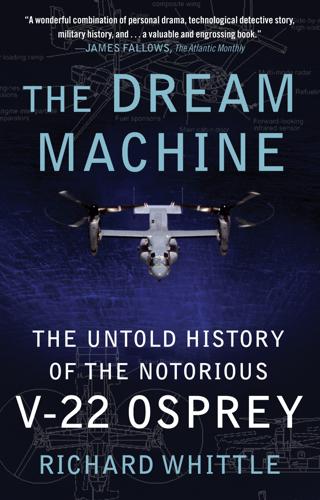
The Dream Machine: The Untold History of the Notorious V-22 Osprey
by
Richard Whittle
Published 26 Apr 2010
The U.S. and other militaries financed, and aircraft companies produced, dozens of other VTOL prototypes. Thousands more were designed but never built. In the 1990s, aerospace engineer and VTOL historian Michael J. Hirschberg refined a graphic of the various attempts that someone at the old McDonnell aircraft company had put together in the 1960s. The graphic, which can be found on the Internet, took the form of a “Wheel of Misfortune.” The wheel represented only those VTOLs actually built. There were forty-five, not including three dozen exotic helicopters Hirschberg later wished he’d included. When Hirschberg published his version of the wheel, only one of the VTOLs on it was still flying, and only two had ever gone into full production and service.
…
Against that backdrop, the U.S. military—like the militaries of the antagonistic Soviet Union and of America’s richest allies, Britain, France, and West Germany—spent millions of dollars over the next two decades on experimental convertiplanes. John P. Campbell, a senior NASA aeronautical engineer, wrote a book on the subject in 1962. He concluded that, counting the helicopter, there were sixteen categories of what experts by then were no longer calling convertiplanes but instead “VTOLs,” an acronym for Vertical Take Off and Landing, pronounced “VEE-talls.” A VTOL aircraft’s type depended on what method of propulsion was paired with what means of converting from vertical to horizontal flight. There were four basic methods of propulsion: rotors, propellers, turbojets, and ducted fans, the last meaning propellers or multibladed fans spinning inside enclosed cowlings.
…
This “vectored thrust” aircraft, which could point its jet exhaust downward to take off and land vertically or hover, was strictly a one-seat fighter plane. It was far removed from the passenger machines the true believers in the convertiplane had envisioned, and by the mid-1970s, engineers had concluded that building a VTOL passenger jet was impractical. For one thing, jet engines create thrust by accelerating a relatively small stream of air to high speeds, which requires burning fuel at high rates. A machine big enough to carry passengers would burn so much fuel lifting off vertically it would have little range. The convertiplane believers were after an aircraft without such limitations, one that would carry passengers and “do in the air substantially everything that a bird can do,” in the words of 1930s aeronautics icon Alexander Klemin.
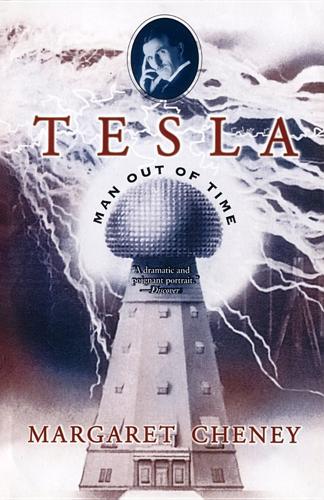
Tesla: Man Out of Time
by
Margaret Cheney
Published 1 Jan 1981
But as the Convair and Lockheed experiments of the 1950s suggest, the Teslian concept was an almost inevitable first step in true VTOL research. That Tesla should have hit upon this idea at a time when the enterprise of aviation was in its infancy is astonishing enough, but if we can credit the Yugoslav magazine Review, Tesla’s VTOL concept may even have anticipated the advent of powered flight. According to this generally respected publication, there is information in the Tesla papers in Belgrade indicating that Tesla’s first VTOL drawings, along with plans for rocket motors, were destroyed in the laboratory fire of 1895!8 The Nikola Tesla Museum in Belgrade contains, in addition to drawings of the aircraft, plans for an “aeromobile,” a jet-propelled automobile with four wheels, apparently designed for flying or for terra firma.
…
Following the intriguing tests of the Convair and Lockheed machines, the international aerospace industry entered into a full-scale pursuit of the ideal VTOL design. Numerous ideas were tried, but by the beginning of the 1980s the favored design was of an aircraft which did not itself change attitude on landing and takeoff, but whose engines were modified so that the direction of thrust could be rotated through 90 degrees. Two of the modern world’s leading operational fighter planes—the Anglo-American British Aerospace “Harrier” and the Russian Yakovlev Yak-36—employ this principle. Plainly Tesla’s flivver-cum-flying stove was a far cry from today’s sophisticated, massively powerful VTOL’s. Indeed, conceived as it was decades before the advent of the jet engine, the flying stove could hardly have been otherwise.
…
Honored at a dinner at the Waldorf with Rear Admiral Charles Sigsbee, he described the “aerial warships” that were coming and once more predicted a wireless telephone that would encircle the globe. The patents on his brilliantly designed flivver airplane or flying stove—in today’s technical literature the descendants of this craft (not to be confused with simple helicopters) are called vertical takeoff and landing aircraft (VTOL)—would not be filed until 1921 and 1927 and finally granted in 1928.7 This is believed to be the only invention patented by Tesla of which, probably for lack of developmental capital, he built no prototype. The year the patents were issued the inventor would have been seventy-two years of age.* The tiny plane, which he thought should sell for less than $1,000, rose straight into the air with its helicopter-type lifting propeller.

Pump Six and Other Stories
by
Paolo Bacigalupi
Published 15 Sep 2010
He could still remember the countryside he had come from and, vaguely, a mud-brick home. More clearly, he remembered terrace-sculpted hills and running along those terraces. Playing in warm summer mud with a Micro-Machine VTOL in his hands while his parents labored in brown water around their ankles and green rice shoots sprouted up out of the muck. Later, he had passed those same terraces, lush and unharvested, as he made his way out of his silent village. Under the cold instant-concrete shadows of the skyscrapers, he stroked his toy VTOL. The wings which folded up and down had broken off and were lost. He turned it over, looking at its die-cast steel frame. He pulled out the datacube and stared at it.
…
Come back when you've got something in your pockets." He waved his goods of virility at the interested, more moneyed buyers who had gathered. Wang Jun slipped back into the crowd. It was true what the Tibetan said. He had nothing in his pockets. He had a ratted wool blanket hidden in a Stone-Ailixin cardboard box, a broken VTOL Micro-Machine, and a moldering yellow woolen school hat. He had come from the green-terraced hills of the countryside with less than that. Already twisted and scarred with the passage of plague, he had come to Chengdu with empty hands and empty pockets and the recollections of a silent dirt village where no thing lived.
…
Tibetan extremists, Americans, us, perhaps the EU; they would all be interested in having such a hostage." Three-Fingers said, "If I'm going to sell him, I'll need to know who put him in there." He Dan nodded, and then the door exploded inward. Splinters of wood flew about and shafts of light illuminated the dim room. Outside there was a whine of VTOLs and then there were bright lights lancing through the door, followed by the rapid thud of heavy boots. Wang Jun ducked instinctively as something seemed to suck the air out of the room and the monitors exploded, showering glass on the technicians and Wang Jun. People were shouting everywhere around him and Wang Jun smelled smoke.
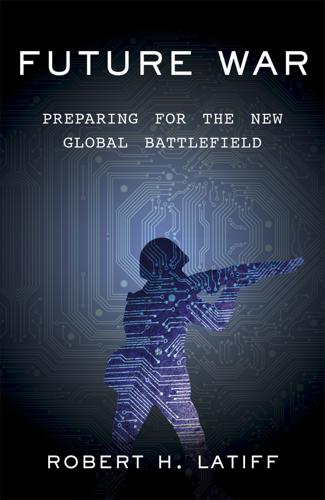
Future War: Preparing for the New Global Battlefield
by
Robert H. Latiff
Published 25 Sep 2017
Amid an intense competition for defense budget money, weapons manufacturers and technology companies are forced to promise a lot to differentiate themselves from their competition. The F-35 fighter competition promised to net the winner a $200 billion contract. Both bidders promised vertical takeoff and landing (VTOL) and other advanced capabilities. Lockheed Martin’s design won over Boeing’s, but the VTOL capability came at great cost in money and time. To date, the fighter is still short of meeting all of its requirements. Industry primarily, but government organizations as well, has a vested interest in a continuous flow of funding and requirements for new technology and weapons to assure their own organizational survival.
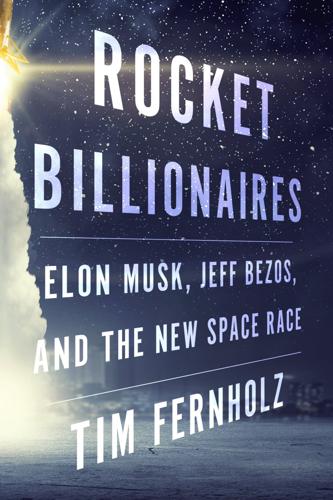
Rocket Billionaires: Elon Musk, Jeff Bezos, and the New Space Race
by
Tim Fernholz
Published 20 Mar 2018
Though it hadn’t demonstrated the accomplishment live and in public, in the manner of SpaceX, it appeared that Blue Origin had done what Musk had been promising for years, the feat he hoped to demonstrate on his birthday: landing a reusable rocket stage after flight. But what’s more, in Musk’s eyes, SpaceX had already done what Blue Origin was getting applause for—it had demonstrated vertical takeoff and landing (VTOL) at its own Texas test facility with a prototype rocket called the Grasshopper, though none of those flights ever went higher than a kilometer above the earth. Musk, unlike Bezos, was a longtime Twitter user and well used to the mores of the platform. Points are given for aggression, and for sarcasm.
…
Low Space Transportation Award, 136 Gerstenmaier, Bill, 42, 102, 137, 163, 166, 207, 209, 224 Global Positioning System (GPS), 19–20, 25, 181 satellites for, 190, 193 Globalstar, 3, 27, 32 Goddard, Robert, 46, 48–49 Goddard rocket, 127 Goldin, Dan, 98, 100–101, 141 Google, 222, 229, 231, 234 Google Lunar X Prize, 242 Gore, Al, 19 Government Accountability Office (GAO), 140 Government Accounting Office (GAO), 154 government relations. See also Evolved Expendable Launch Vehicle program (EELV); Obama administration lobbying, 142, 146, 176–77, 179, 186 Space Act Agreement, 104–5, 183 SpaceX and, 80, 82, 104 Grasshopper reusable rocket, 199–200, 215 vertical takeoff and landing (VTOL), 15–16 Griffin, Michael, 59–60, 65, 93, 97, 98–99, 101–5, 138–42, 167–68 Gross, Bill and Larry, 55–56 Grove, Andy, 108 Guthrie, Julian, 95 H; Halliwell, Martin, 197, 248, 250–51 Hawthorne, California, 150, 205, 218, 248 Heinlein, Robert, 46 Henderson, Scott, 239 High Frontier, The (O’Neill), 68 Hitchhiker’s Guide to the Galaxy, The (Adams), 46 Hooke, Robert, 48 Horkachuck, Mike, 130, 151–52, 155, 157, 208 Hurley, Douglas, 163 Hutchison, Kay Bailey, 143 I; Inmarsat, 32 Innovator’s Dilemma, The (Christensen), 113 In-Q-Tel, 103 Insprucker, John, 117 Intelsat, 234 International Space Station (ISS), ix, xi–xii, 41, 47.
…
See also Evolved Expendable Launch Vehicle program (EELV) certification, 180, 183, 193 GPS development, 19 launch program, 28–29 revolving door jobs scandals, 188–89 SpaceX lawsuit, 186–90, 193 spy and communications satellites, 9 V; Vandenberg Air Force Base, 107–9, 112, 170, 174 Van Horn, Texas, x, 4, 127 test stand, 169 Van Horn Advocate, 4 Vector Space, 235 vertical takeoff and landing (VTOL), 15–16, 125–27, 217, 238–39 Virgin Galactic, 7–8, 97, 127, 210, 213–14, 234–35 crewed test flights, 252 Virgin Group, 5 Vulcan, 190–91 W; Walker, Charlie, 53 Wallops Flight Facility (Virginia), 206 Wall Street Journal, 230, 234 War of the Worlds (Wells), 46 Washington Post, 29, 188 Wells, H.

Beyond: Our Future in Space
by
Chris Impey
Published 12 Apr 2015
Billionaires Bezos and Bigelow are both notoriously publicity-shy, and there’s amazingly little public information about Blue Origin. It was founded in 2000, but its existence was only revealed in 2003, when Bezos started rapidly aggregating land in Texas under a set of shell companies. Like SpaceX, Blue Origin will use a vertical takeoff and landing (VTOL) rocket that’s fully reusable. After being named valedictorian of his high school class, the eighteen-year-old Bezos said he wanted “to build space hotels, amusement parks, and colonies for two or three million people who would be in orbit.”7 Neal Stephenson, the author of Snow Crash and other science fiction novels, worked part-time for Blue Origin for several years.
…
Louis, The (Lindbergh), 90 Spirit rover, 165 Sputnik 1, 37–39, 37, 40, 41, 51, 65, 141, 269 Sputnik 2, 47, 269 Sputnik 3, 39, 269 SR-71 “Blackbird,” 69 Stafford, Tom, 55 Stalin, Joseph, 35, 37, 253 Stapledon, Olaf, 253 Stapp, John, 46 Stark, Tony (Iron Man), 95, 96, 205 stars: ancient Greek concept of, 18 as basis of carbon, 256 in exoplanet detection, 126–28, 129, 130–31 Sun-like, 131, 133, 187, 215, 233, 236 Star Trek, 88, 90, 92, 167, 192, 228–29, 268 Star Trek: The Next Generation, 229, 232 Stephenson, Neal, 103 Stevenson, Robert, 114 Stone, Bill, 97–98, 161 string theory, 257 Student, The, 86 Sub-Biosphere 2, 197 suitports, 196 Sun: ancient Greek concept of, 18 demise of, 197, 286 as energy source, 124, 223, 253 formation of, 156 stars that are similar to, 131, 133, 187, 215, 233, 236 Sunjammer, 185, 284 Survivor (TV series), 75 suspended animation, 250–52 Synergia Ranch, 192 tachyons, 228 taikonauts, 142–43 tardigrades (water bears), 122 Tarter, Jill, 242–43 Tau Ceti, 187–88, 237 Teacher in Space program, 55, 74 technological maturity, 260–61 technology: advancements in, 127, 133, 159–60, 224, 231, 241, 250, 257–62, 288, 292 alien, 186–91 in cameras, 53 computation, 258–62 destructive potential of, 245–46 development of, 20 for efficient energy production, 220–24, 221 erroneous predictions about, 213–14 in foods, 115–16 human beings surpassed by, 258–59 Kardashev’s scale for, 253–54 outdated, 64–65, 106 of remote sensing, 175–91 of spacesuits, 195–96 speculative and hypothetical, 228–32 trust in, 98 in weaponry, 22–24 see also nanotechnology; specific technologies TED2014 conference, 178 telepathy, cybernetic, 206 teleportation, 228–32, 230, 252 telepresence, 176–79, 283 telerobotics, 177–78 telescopes, 31, 49–50, 126, 128, 129–30, 158, 163, 187, 190, 218, 235, 292–93 see also specific instruments Telstar, 153 Tereshkova, Valentina, 74 Terminator, The, 259 terraforming, 172–74, 182, 216–17, 227 terrestrial exoplanets, incidence of, 128, 129, 216, 241 terrorism, 152–53 Tesla, Nikola, 237 Tesla Motors, 96–97, 97 test pilots, 71–74, 272 Tethers Unlimited, 226 Thales, 18–19 “There’s Plenty of Room at the Bottom” (Feynman), 180 thought experiments: and birth of science, 19 for Dyson sphere, 253–54 of Newton, 25 on self-replication, 226–27 3-D fabrication, 159, 160, 226–27, 226 thrust, in flight, 68–69, 72, 186, 220, 222–23 thymine, 6 Timbisha tribe, 118–19 Titan, 53, 125, 177, 182, 278 Tito, Dennis, 75, 170 Toba supervolcano, 202 toilets, in space travel, 116–17 Tokyo Broadcasting System, 75 tortoises, in space research, 49 Tower of Babel, 148 “Tranquility” (toilet), 117 transhumanism, 207–8 transit method, exoplanet detection by, 128–29, 128, 129, 130–31 “Transmission of Information by Extraterrestrial Civilizations” (Kardashev), 253 transporter devices, 228–32 TrES-2B (exoplanet), 132 tricorder devices, 92 Tristan da Cunha, 202–3 “True Story, A” (Lucian of Samosata), 20 Truman, Harry, 36 Tsiolkovsky, Konstantin Eduardovich, 26–28, 36, 72, 110, 149, 268 rocket equation of, see rocket equation Turing, Alan, 258–59 twin research studies, 98 Tziolas, Andreas, 224 UFOs, 142 belief in, 102, 238 proported sightings of, 239, 240 Ulam, Stanislaw, 221 uncertainty principle, 229–30, 291 United Arab Emirates (UAE), 106 United Nations, 47, 141, 145, 147, 214 General Assembly, 42 Moon Treaty of, 279 United States, 141 bureaucracy of, 105–9 China’s relations with, 144 energy consumption of, 222 founding of, 109 government shutdown of 2013 in, 63–64 rocket development in, 28–30, 35–39 space policy debate in, 146–47 space program of, 38, 40–45, 47, 50, 51, 55–56, 56, 63–64, 72, 74–75, 107, 140–141, 140, 154, 184, 195, 296, 271; see also National Aeronautics and Space Administration in World War II, 34 Uranus: probes to, 52 as uninhabitable, 125 V-2 ballistic missile (Retaliation/Vengeance Weapon 2), 30–36, 33, 47, 48 vacuum: as lethal, 54, 108 rocket function in, 30 of space, 70, 108, 126, 195, 222 Vanguard rocket, 36–38, 269 Van Thillo, Mark, 194 Vega (star), 236 Venera 7, 51 Venus: Earth compared to, 171, 215 fly-by of, 51 nanobot exploration of, 182 probes to, 40, 51, 184, 270 property rights on, 145 as uninhabitable, 124 Verne, Jules, 26, 28, 117, 183, 239 vertical takeoff and landing (VTOL) rockets, 103 Very Large Array, 236 videoconferencing, 176 video games: evolution of, 175–77 simulation compared to, 261 Vietnam War, 158 Viking probes, 51, 52, 164, 176 Virgin Atlantic airline, 87 Virgin Galactic, 88–89, 88, 101, 105–6, 113 Virgin Group, 87 Virgin records, 86–87 virtual reality, 176–77 volcanoes: on Earth, 119, 202 on Io, 53, 177 as source of heat energy, 124 super-, 245 Volna rocket, 184 Vomit Comet, 114 von Braun, Wernher, 28, 30–36, 38, 76, 140, 166–67, 269 von Kármán, Theodore, 141 von Littrow, Joseph, 238 von Neumann, John, 227, 258–59 von Neumann probes, 227, 258 Voskhod 2 spacecraft, 108 Vostok 1 spacecraft, 40–41 Voyager 1, 52, 53, 121, 121, 125, 219, 225 Voyager aircraft, 83 Wakata, Koichi, 273 Wallace, Alfred Russel, 164 Wang Yaping, 142–43 Wan Hu, 21–22, 22, 24, 31, 139, 141 warfare, rockets in, 22–24, 30, 32–34 War of the Worlds, The (Wells), 164 warp drive, 228–29 Warwick, Kevin, 206–8 Wasp 18b (exoplanet), 132 water: acidification of, 195 as biomarker, 217–18 on Earth, 172 on Europa, 125 on exoplanets, 132 on Mars, 124–25, 163–66, 165, 170, 172, 173 on Moon, 159–61 as requirement for life, 123–25, 132, 214, 217 in space travel, 116, 159 Watson, Thomas, 213 weaponry: nuclear, 36, 38 technological roots of, 22–24 weightlessness, 54, 88, 114, 167–68, 200 Weisman, A., 293 Welles, Orson, 164 Wells, H.
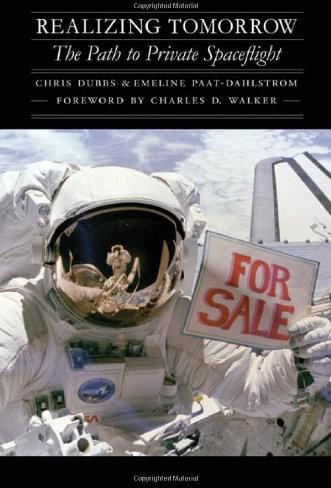
Realizing Tomorrow: The Path to Private Spaceflight
by
Chris Dubbs
,
Emeline Paat-dahlstrom
and
Charles D. Walker
Published 1 Jun 2011
"Bulletin from the Moon Treaty Front." L5 News, January 1980. Hsu, Jeremy. "British Spaceplane Gets Boost." Space.com, 11 March 2009. http://www.space.com/businesstechnology/090311-tw-space-plane. html. Hudson, Gary C. "History of the Phoenix VTOL SSTO and Recent Developments in Single-Stage Launch Systems." SpaceFuture.com, November 1991. http://www.spacefuture.com/archive/history-of-the-phoe nix_vtol_ssto_and_recent_developments_in_single_stage_launch _systems.shtml. "Insanely Great? Or Just Plain Insane?" Wired, May 1996. "Interview with Gary Hudson: Space Entrepreneur & RLV Designer." HobbySpace.com, June 2003. http://www.hobbyspace.com/ AAdmin/archive/Interviews/Systems/GaryHudson.html.

Judas Unchained
by
Peter F. Hamilton
Published 1 Jan 2006
Societies make a lot of short cuts during wartime; as admiral in charge of domestic defence he’ll be able to issue orders that would never be countenanced in peacetime.’ ‘Don’t you worry yourself about that. Hell would have to freeze over for a long time before some Halgarth stooge outsmarts me.’ * The little Boeing 44044 VTOL plane landed on the Observatory pad amid a swirl of air from its electric jets, which stirred up quite a storm of sandy ochre soil and filthy ice granules. It fell away quickly as the fans slowed, and the stewardess opened the hatch. Renne felt her ears pop as the pressure dropped abruptly. They were seventeen thousand feet up in the western side of the Andes, just north of Sandia, with the rugged mountains forming a magnificent snowcapped vista all around her.
…
It didn’t make any difference to Renne’s heart, which was still racing away. She had to sit heavily in the first office they came to. There was no way she could get up again, so she had to take her coat off while remaining in the seat, a simple act which made her even more out of breath. She couldn’t think how she was going to get back out to the VTOL again; the others might have to carry her. ‘Doesn’t this altitude bother you?’ she asked Phil Mandia. ‘Takes a while to adjust,’ he admitted. Renne was beginning to realize how the local team resented her. Some bigshot exec sent up to check on why the operation had crashed, looking to shift the blame onto a field team.
…
‘Bad ones,’ Renne said dryly. ‘I can’t believe he did this.’ ‘Well, it certainly looks like he’s guilty. We’ll confirm that for ourselves, of course. I expect you’ll all be called as witnesses at the trial.’ ‘You’re taking him with you?’ ‘I certainly am.’ * Somehow, Renne managed to hobble her way back to the VTOL plane, without being too obvious as she leaned up against Phil Mandia. Two navy officers escorted Dan Cufflin onto the plane behind her. He was pushed down into a chair on the other side of the aisle from Renne. Malmetal restraints flowed over his wrists and lower legs, holding him secure. Not that he looked as if he’d make a break for freedom.

Great North Road
by
Peter F. Hamilton
Published 26 Sep 2012
They didn’t know. Everything would be all right. And even then, she was sure that one day she’d be out because the monster was real, and one day people would meet it again. The car had pulled into a small compound somewhere near the Thames, with the HDA signs prominent on the fence. A crystal-white executive VTOL jet was sitting on the pad. It didn’t register, because such a thing didn’t apply to her. So she sat passively in the limousine as it drove toward the striking little machine. There were HDA guards from the GE Legion standing beside the airstairs. Then they pulled up outside, and Elston opened the door.
…
But he didn’t know the buyer—and with the quantity involved, he should have known all about the deal. So he told her he was staying behind to watch the market. The DeVoyal finance house controlled nearly 40 percent of the GE bioil futures market, and he didn’t want to be outsmarted by a rogue deal. Angela and Shasta had timed their departures so their hypersonic VTOL executive jets touched down on the mansion’s landing field at the same time, mid afternoon of the first day. That way they could share one of the gold plated horse-drawn carriages up the greenway to the white and silver splendor of the mansion, with its twin spire turrets stabbing 150 meters into the clear violet-tinged New Monaco sky.
…
Let Linsell and the interdiction team sort it out. After all, this was the reason they existed. Some stupid side of him was proud that he was here, doing what had to be done. But mainly he was scared shitless like any real, sane human being. When he looked up at the constellations, he saw silhouettes of three black Mil US-22 VTOL fan aircraft on the rooftop pads of the main building. Squads of HDA’s interdiction troopers were embarking through the broad side doors while the fans swiveled about as part of their pre-flight checks. The US-22s were silent and stealthed, capable of approaching urban targets without warning; in another twenty minutes when the gold twilight horizon vanished they’d be invisible to the naked eye and most sensors.
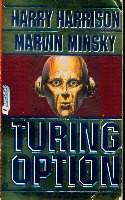
The Turing Option
by
Harry Harrison
and
Marvin Minsky
Published 2 Jan 1992
It's almost impossible to relate that to anything we might call reasoning.'' "It doesn't matter—because the answer is wrong." Benicoff was irritated. "Remember—I was in charge of the investigation. The airport here at the plant is completely automated. Most of the traffic is copters, though we get executive jets as well as cargo VTOLs and STOLs." "How does an automatic airport work?" Brian asked. "Is it safe?" "Safer than human control, I can assure you. It was finally realized back in the 1980s that more accidents were being caused by human error than were being prevented by human intervention. All aircraft must file flight plans before takeoff.
…
If you have checked out of your hotel, Dimitrie will fetch your bags." "All done." "Good. Then if you will share a last glass of wine with me until he returns I will be greatly honored." With Sven loaded into the trunk of the big Mercedes, after last good-byes and a frail embrace from the old man, Dimitrie drove Brian to the tiny local airport. The VTOL plane lifted up from the snow-covered runway for the short hop to Zurich airport to connect with the SAS flight. The service, the seat—food and drink—were an immense improvement on the transatlantic Aeroflot flight. Arlanda airport was clean, modern and efficient. After sober inspection his new passport was stamped and handed back.

Fewer, Better Things: The Hidden Wisdom of Objects
by
Glenn Adamson
Published 6 Aug 2018
Written out in pen and ink with elaborate diagrams of electrical and airflow systems, it is periodically annotated by another engineer’s comment, “read and understood by me,” signed, and dated—important documentation in case the company wanted to apply for a patent later on. Indeed, Arthur was constantly inventing. He eventually went on to be one of the country’s leading jet engine designers, helping to develop the experimental XV-5A VTOL, one of the first-ever vertical-takeoff aircraft, and many commercial engines. If you have ever flown in a DC-10 plane, you can thank my grandfather for helping you arrive safely. Maybe something was missing, though, because while he was still working at General Electric my grandfather took up the hobby of wood carving.

Supertall: How the World's Tallest Buildings Are Reshaping Our Cities and Our Lives
by
Stefan Al
Published 11 Apr 2022
This allows for a more flexible use of roadways. Outside of peak traffic hours, lanes could close to give way to pedestrian space. The classic highway interchange may get a makeover as well. NASA considers the unused areas around highway cloverleafs ideal landing spots for vertical take-off and landing (VTOL) aircraft, where sound is drowned out by speeding cars. These will become desirable sites when aerial ridesharing serves new routes between frequently commuted routes with heavy car traffic. Because, inside cities, people have yet to accept their urban skylines flocked with the noise of buzzing drones.

A New History of the Future in 100 Objects: A Fiction
by
Adrian Hon
Published 5 Oct 2020
But I cannot remember what it is to dream. 82 THE CASCADE Low Earth Orbit, 2052 They were a century late, but the gleaming dreams of the 1950s and ’60s finally came true. By 2050, space travel was at that delicate moment between adventure and commonplace, a moment when tens of thousands lived and worked in orbit, and millions traveled up and down the gravity well in spaceplanes, laser launchers, and vertical take-off and landing (VTOL) rockets. “Orbit” didn’t simply describe a path around Earth; it had become a place that provided unparalleled freedom and immunity. If you were rich or smart or valuable enough, you could earn yourself a spot on the frontier—but unlike the old American frontier, orbit had all the comforts of home with none of the downsides.
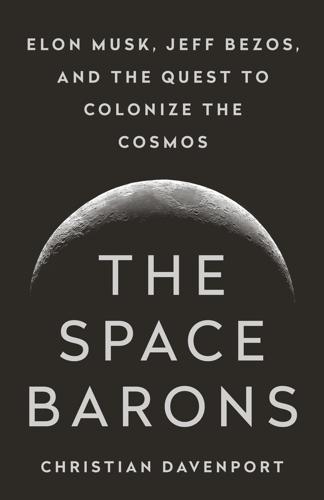
The Space Barons: Elon Musk, Jeff Bezos, and the Quest to Colonize the Cosmos
by
Christian Davenport
Published 20 Mar 2018
Years before, SpaceX had repeatedly flown a test rocket called Grasshopper a few hundred feet into the air and then landed it, with one flight as high as nearly half a mile. So, technically, Musk had done it first. “@JeffBezos Not quite ‘rarest’. SpaceX Grasshopper rocket did 6 suborbital flights 3 years ago & is still around,” Musk tweeted in response. He added, “Jeff maybe unaware SpaceX suborbital VTOL [vertical takeoff and landing] flight began 2013.” But the highest any of those test rockets had traveled was 1,000 meters (3,280 feet). New Shepard’s rocket hit an apogee of 329,000 feet and its capsule went even higher. No rocket had ever made it to space before and then landed vertically. That was a first—and a record for the history books.

Look To Windward
by
Iain M. Banks
Published 14 Jan 2011
They'd got drunk the night before they left; Estodien Visquile with his extended entourage including the bulky, white-furred Eweirl, and he. He had to be helped from his bed the next morning by a laughing Eweirl. A drenching under a cold shower just about brought him round, then he was taken straight to the VTOL, then to the field with the sub-orbital, then to Equator Launch City, where a commercial flight hoisted them to a small Orbiter. A demilled ex-Navy privateer was waiting. They'd left the system headed for deep space before his hangover started to abate, and he realised that he had been selected as the one to do whatever it was he had to do, and remembered what had happened the night before.

Nexus
by
Ramez Naam
Published 16 Dec 2012
The deal was real now. He would serve as their spy, and in exchange no one would go to jail. He and Rangan and Ilya would stay in science for just so long as Kade's mission lasted. It was only then that they told him that Wats had gotten away. Good for Wats, he thought. A guard led him to the roof, to the VTOL plane waiting on the helipad; its wings rotated, its engines turned to the sky for vertical take-off. The engines were whining already. They ushered him up the stairs, and inside he found Rangan and Ilya, and the agent who would come with them to retrieve the Nexus code from San Francisco. "Buckle up," the agent – who introduced himself as Myers – said over the sound of the engines.

Islands in the Net
by
Bruce Sterling
Published 31 May 1988
She stared at it. The narrow waist of the peanut had two broad counterrotating helicopter blades. “When the blades move, they catch the light, and it looks like a saucer,” she said aloud. “A flying saucer with big bumps on the top and the bottom.” Voroshilov examined the screen. “You saw a Canadair CL-227 VTOL RPV. Vertical Take-Off and Landing, Remotely Piloted Vehicle. It has a range of thirty miles—miles, what a silly measurement.…” He typed a note on his Cyrillic keyboard. “It was probably launched somewhere on this island by the assassins … or perhaps from a ship. Easy to launch, this thing. No runway.”
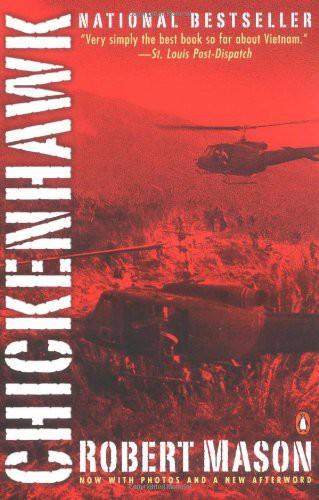
Chickenhawk
by
Robert Mason
Published 28 Mar 2005
Harry Roper, graduate of West Point, retired brigadier general, has been racing his sailboat single-handedly back and forth across the Pacific. And at seventy-two, he’s winning races. Turns out that Jack Home, my partner from the ice cartel at Dak To, is a partner in a law firm in Atlanta that specializes in intellectual property, patents, contracts, and he wants to help me get my VTOL (Vertical Takeoff and Landing project) going. You know, gratis, until I make enough money to be interesting. During the two and a half years I spent writing Chickenhawk, I was not able to do formal research about the war. I relied on my memories and I made mistakes. I confused Stoney Stitzle (Stoopy Stoddard in the book) who shared a tent with Jerry and me at Dak To with someone else.

Revelation Space
by
Alastair Reynolds
Published 1 Jan 2000
Lower, there were drone-dirigibles and, lower still, bulbous-bodied transport helicopters, tilt-wings and veetols, skimming the periphery of the compound, occasionally dropping to disgorge armoured personnel carriers or walking troops, ambulances or armed servitors. There was a scorched, grass-covered apron to one side of the compound, where six delta-winged, windowless aircraft were parked on skids, their upper surfaces precisely mimicking the sun-bleached hue of the ground, their VTOL irises open for inspection. Khouri felt herself stumbling, falling towards the grass at her feet. She wore chameleoflage fatigues, currently emitting in dappled khaki. There was a lightweight projectile weapon in her hands, its alloy grip contour-moulded to match her palm. She was helmeted, a two-d readout monocle dangling down from the helmet's rim, showing a false-colour heat-map of the battlezone, telemetered from one of the dirigibles.
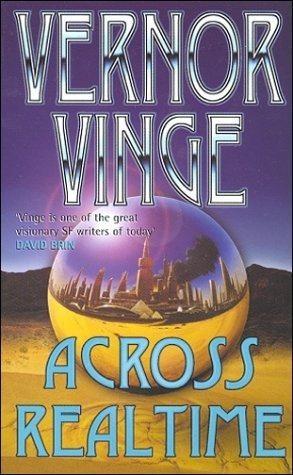
Across Realtime
by
Vernor Vinge
Published 1 Jan 1986
No that wasn't right, not if the problem had really happened on the last rev. Per-haps Madagascar was a possibility. That People's Republic would not exactly welcome them. They would have to stay undercover till Air Force tracking and reconnaissance spotted the crash site.... A strike-rescue could come any time now, say with the Air Force covering a VTOL Marine landing. Angus didn't buy it. "There's the Dome, Allison. No country on Earth could build something like that without us knowing about it. I swear it's kilometers high." He waved at the second sun that stood in the west. The two suns were difficult to see through the forest cover. But during their hike from the crash site they'd had better views.

The Transhumanist Reader
by
Max More
and
Natasha Vita-More
Published 4 Mar 2013
By the time we have surveyed our galaxy in the infrared to the 25th magnitude, there will not be any evidence of another technological civilization in our galaxy. By the time world GNP is four times the 1990 level, 1,000 people will have physically lived in space over 90 percent of the time for the previous seven years. By the year 2000, over 20,000 people in the U.S. will commute to work in Vertical Take-Off and Landing (VTOL) aircraft they park in their garage and drive down the street. The rest mass of the electron neutrino is greater than .01 eV in ordinary space. If labor-saving device X were widely used in industry Y, industry employment five years later would be less. Death-bed confessions or other evidence will eventually show that person X was murdered.
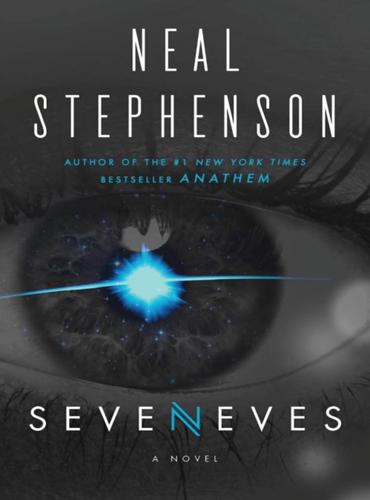
Seveneves
by
Neal Stephenson
Published 19 May 2015
Its 13,500-foot runway suggested it might have had offensive purposes as well. It had been an alternate landing site for the Space Shuttle, never used. In any case it was ridiculously oversized for the town of Moses Lake and had tended to be used by the aerospace industry in recent decades for various training and experimental purposes. Blue Origin had used it to test a VTOL craft in 2005, operating from a trailer on the empty lakebed west of the airport where New Baikonur was arising now, and where Doob was walking about trying to track down the scent of frying bacon. Some giant, windowless aircraft hurtled overhead, deploying a phalanx of tires from its belly, and made a long, slow landing on the big runway, using every one of the 13,500 feet.